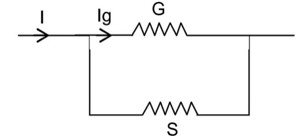Class 12th
Get insights from 12k questions on Class 12th, answered by students, alumni, and experts. You may also ask and answer any question you like about Class 12th
Follow Ask QuestionQuestions
Discussions
Active Users
Followers
New answer posted
2 months agoContributor-Level 10
y = |x − 1|, y = 3 – |x|
(A graph is shown with vertices A (1, 0), B (2, 1), C (0, 3), D (-1, 2). The lines are y = x - 1, y = 3 - x, y = 3 + x, and y = -x + 1)
AB = √2, BC = 2√2
⇒ Area = 4 sq. units
New answer posted
2 months agoContributor-Level 10
h' (x) = f' (x) – 2f (x).f' (x) + 3 (f (x)².f' (x)
= f' (x)/3 (f (x) - 1/3)² + 2/9)
∴ h' (x) ≥ 0 ⇔ f' (x) ≥ 0
New answer posted
2 months agoContributor-Level 10
So, two photons having equal linear momenta have equal wavelength. As wavelength decreases, momentum and energy of photon increases.
New answer posted
2 months agoContributor-Level 10
g (x) = (f (nf (x) – n)?
g' (x) = n (f (nf (x) – n)? ¹ . f' (nf (x) – n) . n . f' (x)
∴ g' (0) = 0
⇒ 4 = n (f (nf (0) – n)? ¹ . f' (nf (0) – n) . nf' (0)
⇒ 4 = n (f (0)? ¹ . f' (0) . nf' (0)
⇒ 4 = n . 1 . (-1) . n (-1)
n² = 4
⇒ n = 2
New answer posted
2 months agoContributor-Level 9
Very small change in minority charge carriers produces high value of reverse bias current.
Taking an Exam? Selecting a College?
Get authentic answers from experts, students and alumni that you won't find anywhere else
Sign Up on ShikshaOn Shiksha, get access to
- 65k Colleges
- 1.2k Exams
- 679k Reviews
- 1800k Answers

